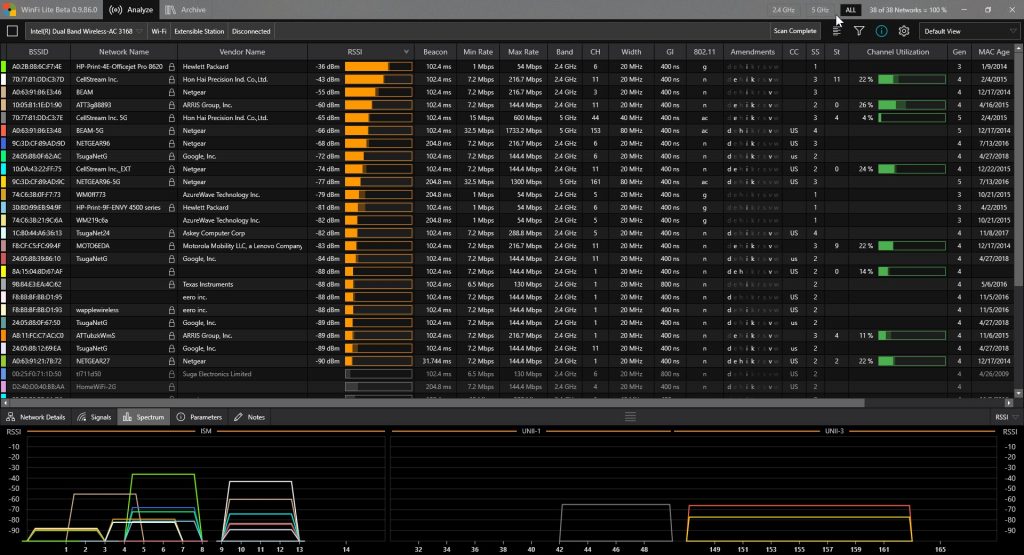Recently released at the Microsoft Store is a new free Wi-Fi Analyzer called WinFi Lite by Helge Magnus Keck (@HelgeKeck on Twitter) – look here: https://www.cellstream.com/reference-reading/cellstream-blog/430-winfilite.
[Update – no longer available at the Windows Store – here is the download link: https://www.helge-keck.com/ – click on the download button top right]
After test driving this new tool, I can say it is perhaps the best free Windows Wi-Fi analyzer out there. The installation was swift and painless.
Here is what the initial start screen looks like:
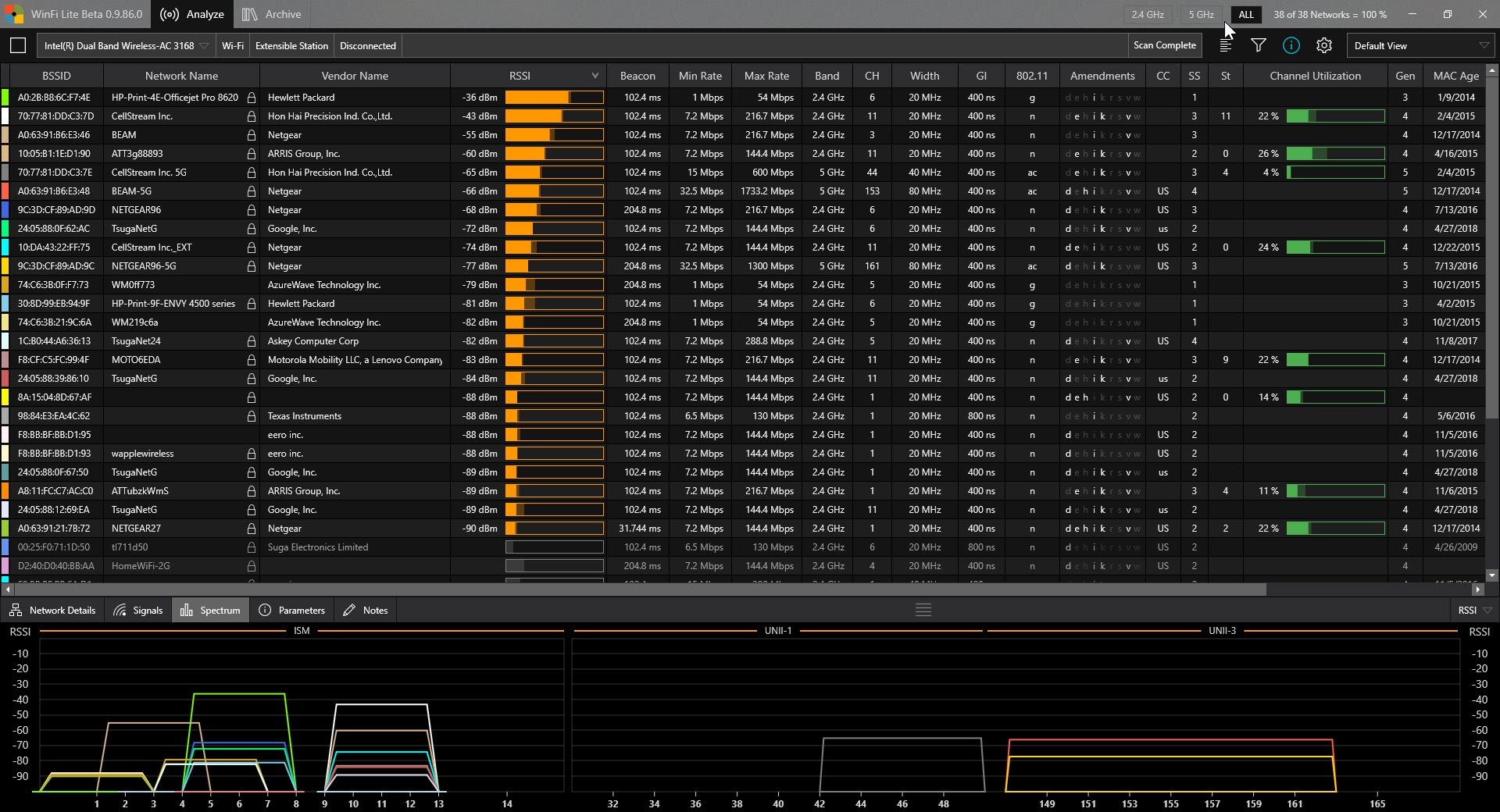
The first thing that hits you is it is similar to other Wi-Fi analyzers with the exception that is shows both the 2.4 Ghz and 5 Ghz channels at the bottom of the screen! Nice.
The usual column display is on the top displaying BSSID, Network Name, Vendor Name (this is actually better than some other tools in recognizing vendors from he MAC address OUI), RSSI, Beacons, Rates, Band, Channel, Width and then a series of 802.11 specific details. It is here that this program leaps ahead of all the others. I love the MAC age column that reveals older systems that may have more known vulnerabilities.
Clicking on any of the column headers allows you to sort (the default is to sort on RSSI).
A word of warning – in the release I am reviewing, when you hover on items you don’t get any help or indicator as to what that item is (version 0.9.86.0)
The top tool bar looks as follows:
![]()
Analyze is selected be default. You also see an Archive button. Clicking on this reveals prior sessions:

Click on any of the plus signs to reveal any notes and replay those sessions! Now that is cool.
On the far right you can switch between 2.4 GHz, 5 GHz and both. Again, cool that you can see both simultaneously.
![]()
On the top left is a “Stop”/”Play” button so you can pause and restart scanning. Next is the drop down which lets you select the interface to use for scanning, so the program supports multiple interfaces.
![]()
On the top right are four buttons and the current profile. These buttons are essentially toggles to turn on and turn off items (turned on they are blue).
There are a number of pre-loaded profiles. Just click on the “Default View” down arrow:
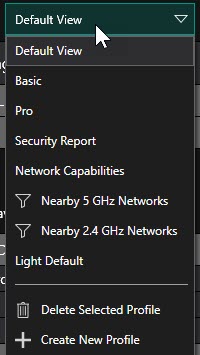
Try switching between these.
You will see that the columns will change.
The most interesting one is the “Security Report” view as all the open networks will be grouped and shown at the top of the display.
Also any WEP networks will be grouped and listed.
There is also the network capabilities report and then two nearby reports, one for 5 GHz and one for 2.4 Ghz. I like this because it clears some of the clutter and lets me focus on the closes networks I am scanning.
You can add profiles in the settings, you can see I added one called Light Default. This just changes the default to a white background which I find easier to read in bright environments.
Truth is all of this is customizable and you can create profiles you like.
One thing I would like to see is the ability (like Wireshark) to share profiles. Feature request!
The gear icon is program settings. Click on it, and the right part of the screen displays the settings options:
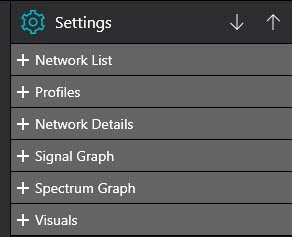 Click on the plus signs to expand the particular item you wish to customize.
Click on the plus signs to expand the particular item you wish to customize.
Like Wireshark you can have different profiles with different settings and I really like that.
I encourage you to play with the various settings (create a new profile first) so you can experiment, yet still retain the default when you want to return to it.
That said, I think the variety of profiles that are included as shown above are enough for most users.
The “Info” button will display or not display the Spectrum views at the bottom of the screen.
The “Filter” button will allow you to create filters for text, network characteristics, and network data such as name, vendor, channel, etc.. These options appear on the left side of the display.
The text alignment button is really a button that allows you to group by any column. You just drag the column header into the group by box and poof, everything is arranged. Below, I have grouped by Vendor name:
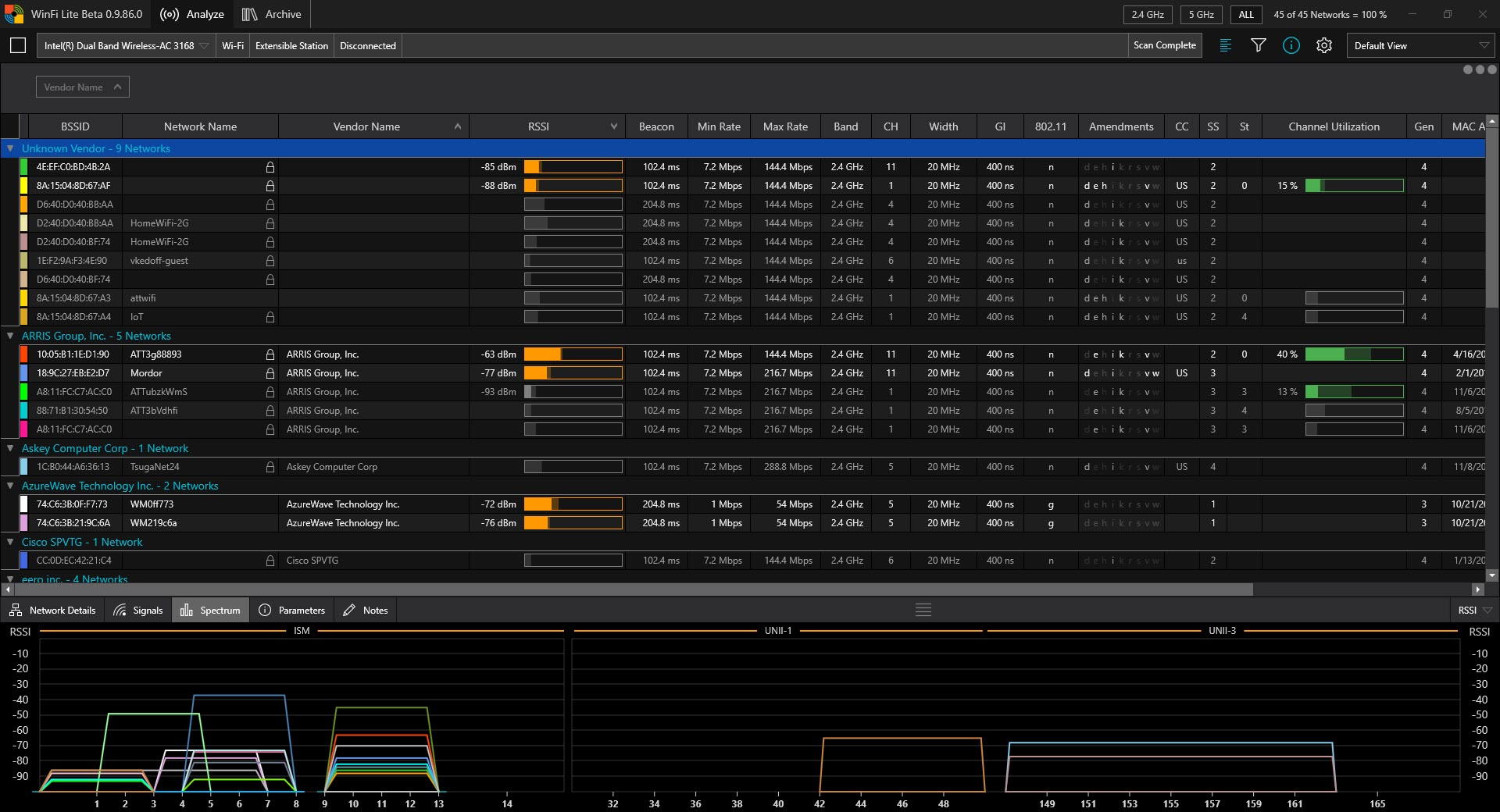
Now on to the bottom part of the display.
You can resize this area by dragging the border up or down. Here I have resized the bottom area:

If you keep dragging up, you will find the display is rearranged, which I like.
You can select Network Details, Signals (strength over time), Spectrum (shown), Parameters, and then you can add notes.
The Network Details and Parameters should be next to each other because they show output for whatever network you have selected in the top part of the screen.
That is my brief review. I love this tool and will be recommending it in my Wi-Fi classes.
I hope you find this article and its content helpful. Comments are welcomed below. If you would like to see more articles like this, please support us by clicking the patron link where you will receive free bonus access to courses and more, or simply buying us a cup of coffee!, and all comments are welcome!

